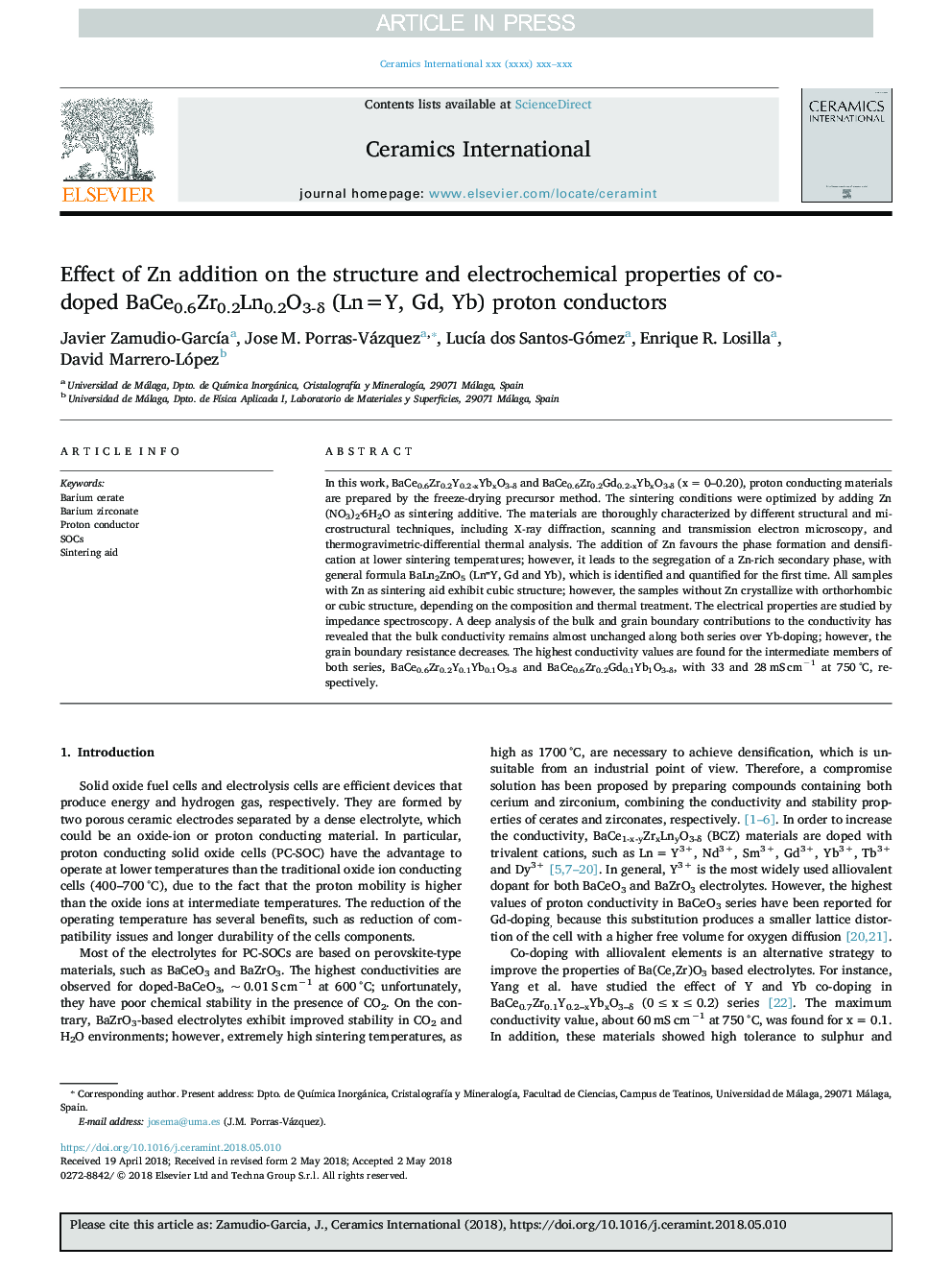| Article ID | Journal | Published Year | Pages | File Type |
|---|---|---|---|---|
| 7886755 | Ceramics International | 2018 | 9 Pages |
Abstract
In this work, BaCe0.6Zr0.2Y0.2-xYbxO3-δ and BaCe0.6Zr0.2Gd0.2-xYbxO3-δ (xâ¯=â¯0-0.20), proton conducting materials are prepared by the freeze-drying precursor method. The sintering conditions were optimized by adding Zn(NO3)2·6H2O as sintering additive. The materials are thoroughly characterized by different structural and microstructural techniques, including X-ray diffraction, scanning and transmission electron microscopy, and thermogravimetric-differential thermal analysis. The addition of Zn favours the phase formation and densification at lower sintering temperatures; however, it leads to the segregation of a Zn-rich secondary phase, with general formula BaLn2ZnO5 (LnËY, Gd and Yb), which is identified and quantified for the first time. All samples with Zn as sintering aid exhibit cubic structure; however, the samples without Zn crystallize with orthorhombic or cubic structure, depending on the composition and thermal treatment. The electrical properties are studied by impedance spectroscopy. A deep analysis of the bulk and grain boundary contributions to the conductivity has revealed that the bulk conductivity remains almost unchanged along both series over Yb-doping; however, the grain boundary resistance decreases. The highest conductivity values are found for the intermediate members of both series, BaCe0.6Zr0.2Y0.1Yb0.1O3-δ and BaCe0.6Zr0.2Gd0.1Yb1O3-δ, with 33 and 28â¯mSâ¯cmâ1 at 750â¯Â°C, respectively.
Related Topics
Physical Sciences and Engineering
Materials Science
Ceramics and Composites
Authors
Javier Zamudio-GarcÃa, Jose M. Porras-Vázquez, LucÃa dos Santos-Gómez, Enrique R. Losilla, David Marrero-López,
